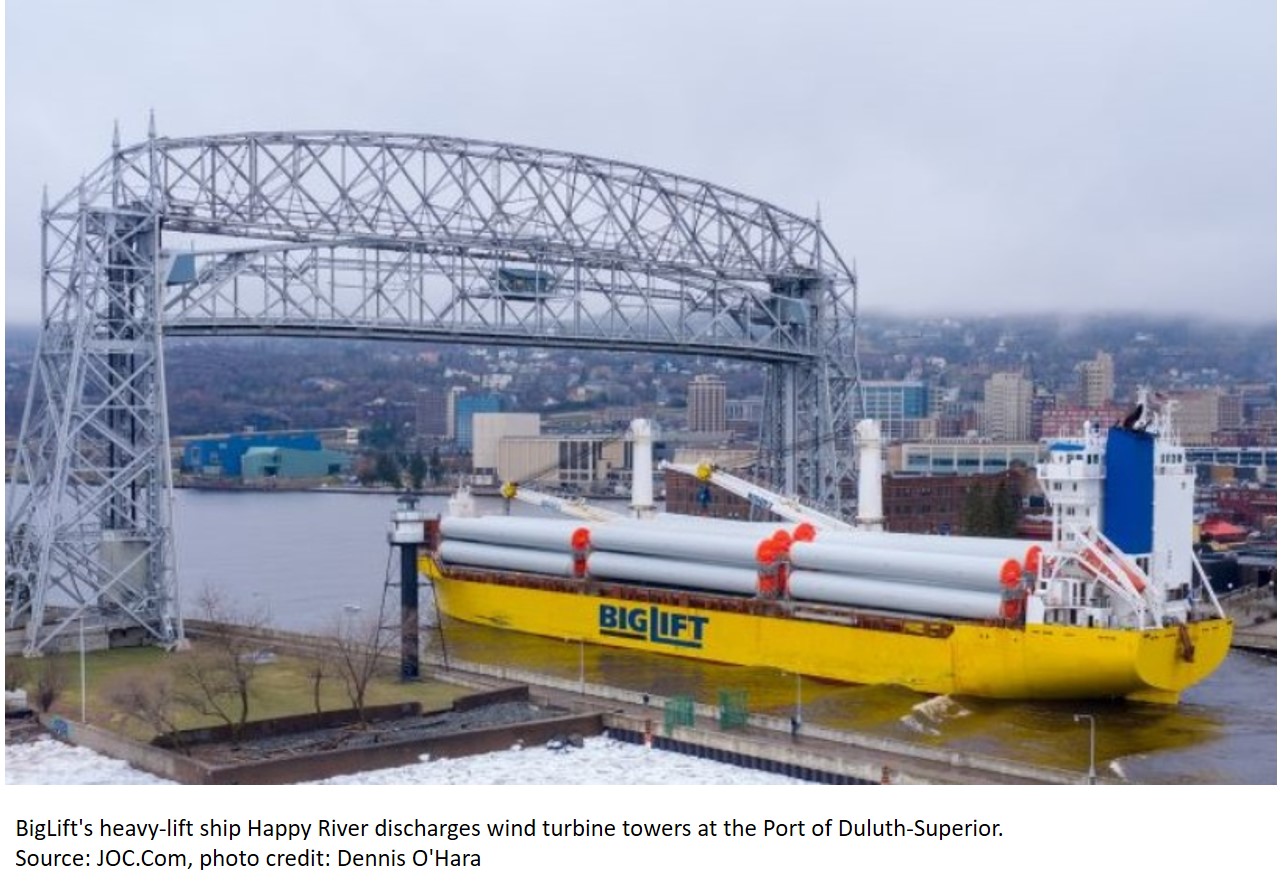Market Data

January 15, 2020
Wind Energy Tax Credits Benefit Industry and Ports
Written by Sandy Williams
The wind energy industry received a boost from a U.S. spending bill approved in December. The bill extends energy tax credits for wind, solar and other green energy projects to 2024. Due to the extension, IHS Markit is now expecting a boom rather than a decline for the industry in 2020.
The extension increased the tax credits for wind energy developers who begin projects or spend 5 percent of project costs in 2020 and come online by 2024. The production tax credit jumped from 40 percent to 60 percent of the 10-year, $25 per megawatt hour cost. The alternative discounted investment tax credit (ITC) was increased to 18 percent from 12 percent.
The Port of Duluth-Superior has benefited from the tax credit for wind development, handling 306,000 freight tons of wind turbines and components in 2019 and surpassing the record of 302,000 freight tons in 2008. Port authorities expect that amount to increase in 2020 as wind farm development progresses in the Midwest and Canadian provinces.
Turbine shipments to the port began in 2006, but yearly volumes were “up and down” until recent years and the approval of tax credits, said Jonathan Lamb, president of Duluth Cargo Connect, a partner with the Port and Lake Superior Warehousing.
Lamb told JOC.com that the OEMs and American Wind Energy Association were “ very confident with the efficiency, productivity, and technology advancements” that will allow projects to move forward even after the PTC expires.
Wind turbines and components from Europe and the Mediterranean designated for the Midwest and Canada tend to be shipped through the St. Lawrence Seaway. Asian imports are more likely to arrive in the Gulf and be transported by train to installation sites. Duluth receives much of its wind equipment shipments from Canada.

The Port of Duluth, already the dominant port for project cargo on the Great Lakes, is expanding its warehouse space and has invested significantly in the past four years to increase its ability to handle oversized cargo.
“This has been a banner year for wind energy cargo and also for the Clure Public Marine Terminal and Duluth Cargo Connect,” said Deb DeLuca, executive director of the Duluth Seaway Port Authority. “And it’s no accident. We’ve made more than $25 million in strategic investments to the terminal over the past four years, enhancements that help support the excellent work Duluth Cargo Connect does in handling these oversize wind cargos.”
According to AWEA, there is now 100,125 MW of wind energy in the United States supplied by 57,700 wind turbines operating in 41 states. Wind power has tripled in the past decade and is now the largest source of renewable energy capacity in the country.
Wind and the Steel Industry
Depending on height, wind towers use between 100 and 200 tons of rolled steel in construction, as well as additional steel for the rotor hub and nacelle that contains the drive train and rotor shaft. AWEA reports that 500 U.S. factories build wind turbine parts.
Both Nucor and SSAB are using wind as a source of renewable energy. Nucor Steel Sedalia and Evergy Inc. have partnered on a wind farm at the Missouri site that will eventually offset 100 percent of the energy used by Nucor’s mill. SSAB Montpelier is powered primarily by wind farms operated by Mid-American Energy.







